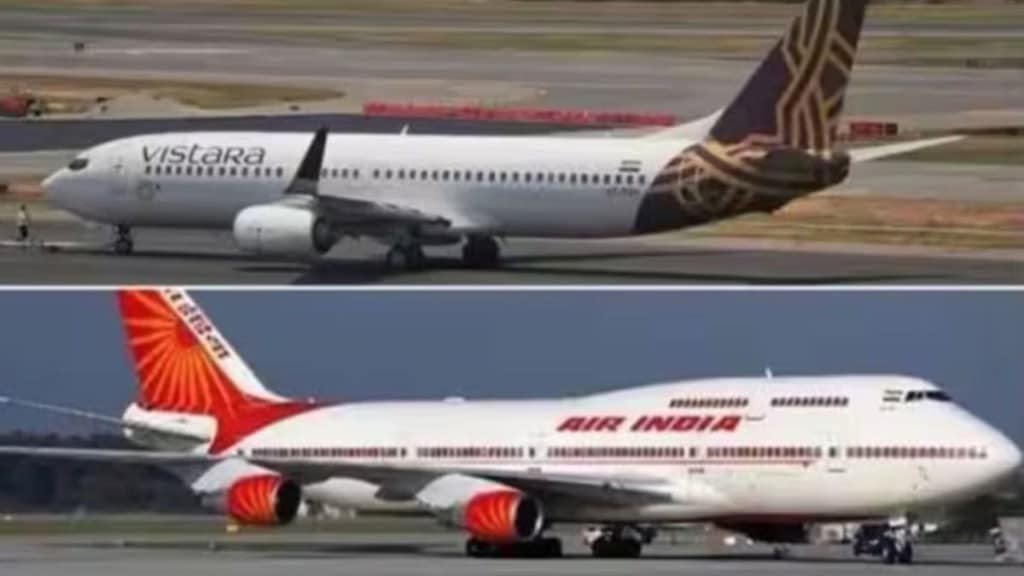The merger of Air India and Vistara, announced in November 2022, marks a significant consolidation in India’s aviation sector, aimed at creating a more robust and competitive national carrier. The merger combines Air India’s extensive international network with Vistara’s strong domestic presence, offering a unified brand that will enhance operational efficiencies and reach.
As part of the merger, Singapore Airlines will retain a 25.1 per cent stake in Air India. Vistara, the airline being integrated, is a joint venture between Singapore Airlines and the Tata Group.
The merger is expected to streamline operations, expand route options, and improve customer experience while strengthening India’s position in the global aviation market. However, there is also the other side of the coin to evaluate. This merger between the two airlines is going to impact hundreds of their employees and millions of air passengers who choose them.
600 non-flying staff to be affected
The merger between Air India and Vistara is projected to affect approximately 600 non-flying staff members from both airlines, according to sources on Wednesday. The Tata Group, which owns both the struggling full-service carriers, is committed to mitigating the impact on these employees.
Efforts will be made to offer job opportunities within the Air India group and other Tata companies. Together, Air India and Vistara employ over 23,000 individuals.
No job losses for pilots, cabin crew
According to a PTI report, cabin crew and pilots will not face job losses due to the merger. Instead, efforts will be directed towards securing employment opportunities for affected staff within Air India and other Tata Group companies. For those who cannot be placed within these organisations, a voluntary separation scheme will be offered.
Transparent fitment review for staff
The fitment exercise, which involves assessing the roles and responsibilities of staff from both Air India and Vistara in anticipation of the merger, has been underway for several months. This evaluation process considers factors such as individual experience, performance, and other relevant criteria.
A PTI report indicate that the fitment process is being conducted with fairness and transparency. The review also takes into account the transition of the airline group towards becoming a more technology-driven organization.
Additionally, the organisational structure has been designed with future fleet expansion, network growth, and service enhancements in mind.
Air India, Vistara offers voluntary retirement scheme
As Vistara prepares for its merger with Air India, it has introduced a voluntary retirement scheme (VRS) for its ground staff. This announcement follows a similar move by Air India earlier this month. With a workforce of 6,500—about one-third the size of Air India’s staff—Vistara is offering the VRS to permanent ground staff with over five years of continuous service.
The scheme does not apply to pilots, cabin crew, licensed post holders, or those set to retire by March 31, 2025. Employees opting for the scheme will receive an ex-gratia payment in addition to statutory benefits like Provident Fund and gratuity. The VRS will be available until August 23. Sources indicate that the scheme targets those not assigned roles in the newly merged entity.
Air India starts codesharing with Vistara
Many air tavelers have noticed Air India codes appearing on Vistara flights across multiple booking platforms, including Air India’s own website. Vistara’s own website also show Air India as its codeshare partner. “We are delighted to announce our new Bilateral Interline Partnership with Air India. This arrangement enables customers to travel seamlessly on the entire network of both Air India and Vistara using a single ticket,” a message on Vistara’s website reads.
This change signals the gradual integration of Vistara into Air India as part of their merger process. By implementing codeshare agreements, Air India can strategically plan for the summer 2025 schedule, optimise flight capacities, and reduce operational redundancies, improving the chances of financial stability.
A codeshare agreement allows airlines to share flight codes, with one carrier marketing the flight while the other operates it. In this scenario, Vistara operates the flights, but Air India markets them. Consequently, flight information screens will display both Vistara’s “UK” code and Air India’s “AI” code.
Codesharing is a standard industry practice that allows airlines to manage seat allocations and revenue more efficiently. It also facilitates a smoother transition during mergers by allowing for a phased integration of systems and operations. Both Air India and Vistara are experienced in codesharing, as they already have numerous agreements with international carriers.
